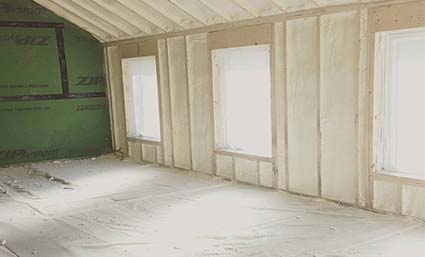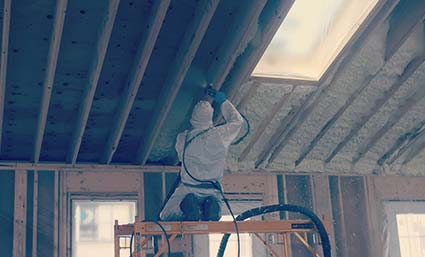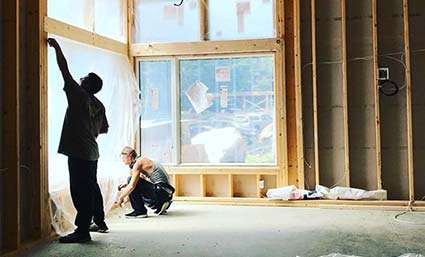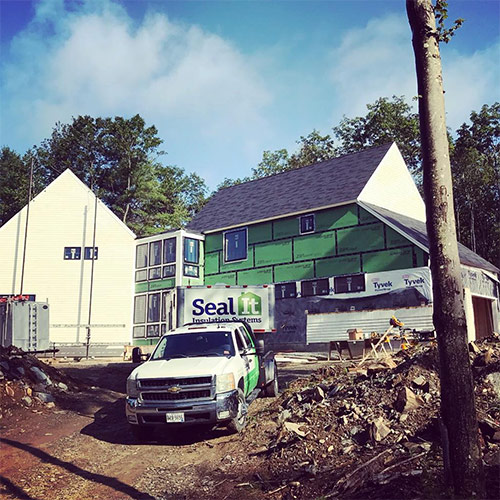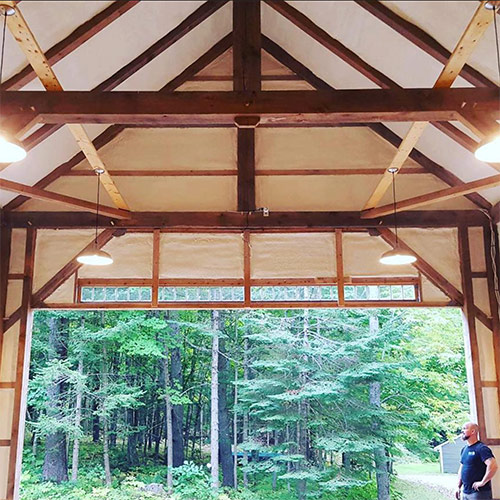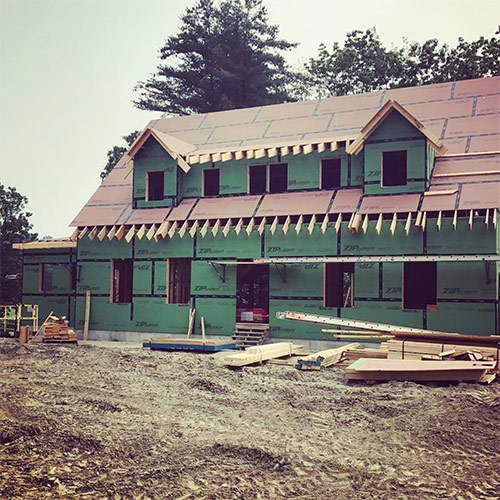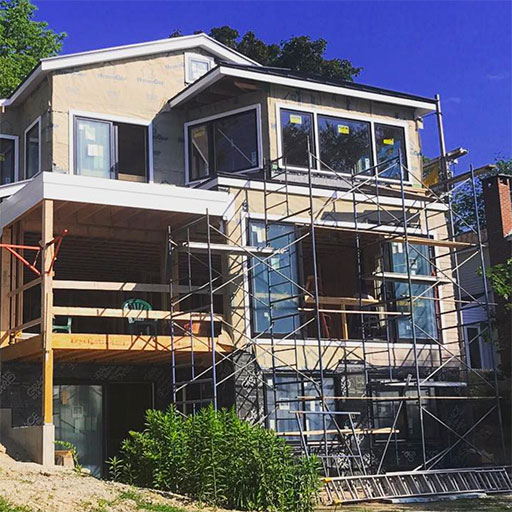Insulation is an essential part of every Maine home, and selecting the right type of insulation can both help increase your home’s energy efficiency and save you money on your utility bills.
Spray foam insulation has been gaining popularity in recent years because of its many advantages. However, before you jump in and make the decision to get spray foam insulation in your home, there are some important things you need to know.
In this post, we’ll be discussing everything you need to know about getting spray foam insulation in your home.
IS IT SAFE TO BE IN YOUR HOUSE DURING INSTALLATION?
One of the biggest concerns homeowners have when it comes to getting spray foam insulation is whether it’s safe to be in their homes during installation.
Generally, the answer is no. If insulation is being installed in the main area, you aren’t permitted to be in your home.
That said, if installation is occurring in the basement or attic, you could be in your home during that time. A minimum of one floor of separation — with doors — is required to limit exposure.
Additionally, it’s important to note that the installation process involves chemicals that may cause irritation or allergic reactions in some individuals. In general, it’s recommended that you vacate the premises during the installation process to minimize any possible health risks. Then, once the installation is complete, there’s a 24-hour curing period, during which you’ll need to continue to stay clear of the site.
HOW LONG DOES THE INSTALLATION TAKE?
The timeframe for installing spray foam insulation varies depending on the size and complexity of the project. Some installations can be completed in one visit, while larger projects will take multiple days if necessary.
This timeframe includes preparing the area, applying the foam, and trimming any excess foam to ensure a clean, finished look.
THE SPRAY FOAM INSULATION INSTALLATION PROCESS
1. The contractor will give you a detailed explanation of the project.
Before any installation work begins, your insulation contractor will give you a detailed explanation of what will happen during the installation. They’ll explain what spray foam insulation is, how it works, and provide you with a general timeline for the project.
Additionally, they should also let you know if any obstacles need to be addressed before the installation can start.
2. The site will be prepped and well-ventilated.
Once you’ve agreed on the scope of work, your insulation team will begin prepping the site. This includes ensuring the area is well-ventilated to reduce the risk of respiratory problems during and after installation. Additionally, the team will prep and cover the area to prevent overspray.
3. Contractors wearing protective gear will spray the foam in the desired location.
Once the site has been prepped, your insulation team will begin applying the spray foam insulation. This involves using a special spray gun, which mixes two chemicals as it sprays. The chemicals react and expand, filling any gaps and cracks in the walls or ceiling.
(This is why spray foam insulation is ideal for attics, crawlspaces, and basements: it can easily fill any hard-to-reach area.)
4. Clean up the area.
After the insulation is applied, the team will clean up the area. They’ll remove any excess foam, masking tape, or debris created during the application process.
5. Keep the site vacant for at least 24 hours after the spray foam has been installed.
The final step is to allow the foam to cure, which will take at least 24 hours. Curing occurs when the foam hardens on the surface but continues to expand inside to fill any voids.
During this period, you should avoid entering your home. After 24 hours have passed, you can return to your property, and any necessary touch-ups can be made at this time.
WHAT ARE THE DISADVANTAGES OF SPRAY FOAM?
While spray foam insulation comes with many advantages, there are also some disadvantages to consider. The biggest drawback is its cost; spray foam insulation can be more expensive than other types of insulation. (Though the investment is often well worth it.)
Additionally, direct access is necessary for installation. With insulation teams like ours at Seal It, we don’t inject foam, so the wall area needs to be open to apply foam directly.
Another disadvantage is the installation process: while it cures within 24 hours, off-gassing chemicals still may irritate those with chemical sensitivities. In other words, it may take a few days for the “new car smell” to wear off. (Keep in mind, a whole house of newly installed carpet gives off many more VOCs than foam installation.)
Finally, although it’s a popular type of insulation, not all contractors are equipped to install it correctly, and improper installation can lead to problems down the line.
CAN YOU INSTALL SPRAY FOAM INSULATION YOURSELF?
It’s never recommended for homeowners to install spray foam insulation themselves. The installation process should only be done by trained professionals with the right equipment and experience to ensure that everything is done correctly.
Improper installation can lead to issues such as air leaks and moisture buildup, which can result in mold growth and other problems. There’s also a possibility for off-ratio foam to occur; in that case, the foam will never cure and eventually need to be ripped out.
Spray foam insulation is an excellent choice for homeowners looking for high-value insulation. While it does come with some disadvantages, such as higher costs and the need for professional installation, the many benefits far outweigh these drawbacks.
To ensure your spray foam insulation is installed correctly and safely, it’s important to work with a professional contractor who has experience in working with spray foam insulation. With proper installation, spray foam insulation can provide you with many years of energy savings and overall comfort in your Maine home.
If you’re ready to find out how spray foam insulation can help you with energy savings in your home, contact us at Seal It for a free quote today!

